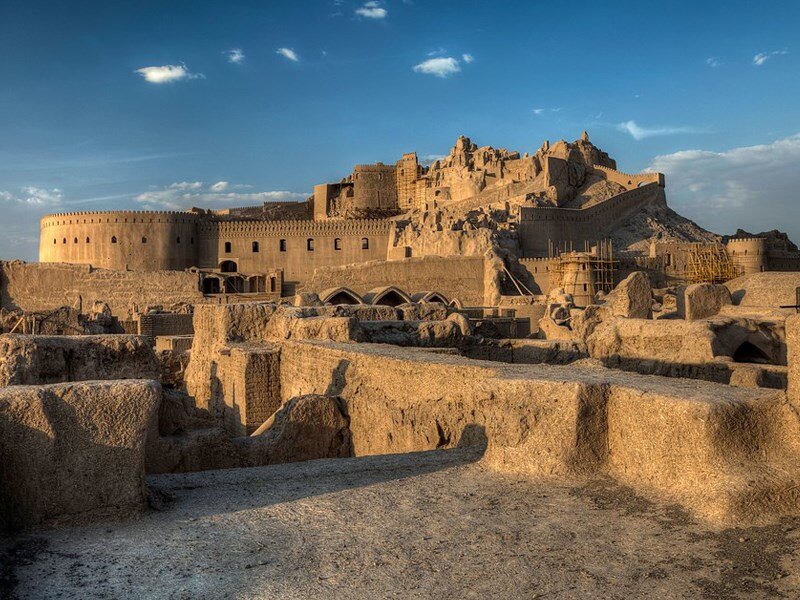Lighting project underway on Bam Citadel

TEHRAN – A lighting project has recently been commenced on Arg-e Bam, a quake-stricken UNESCO-registered citadel in Iran’s southern Kerman province, the director of the World Heritage site has said.
The first phase of the project is currently underway and is expected to come to an end within two weeks, Mohsen Qasemi explained on Wednesday.
A budget of 17 billion rials ($57,000) has been allocated to the project, the official added.
Situated in a vast desert plateau in the southern reaches of Iran, the citadel rises like a phoenix again from the intimating earthquake after being almost entirely leveled in 2003.
Tracing its origins back to the 6th century BC in the Achaemenid period, the oasis town and citadel of Bam didn’t experience its golden era until much later in the 7th to 11th centuries when it was one of the key stops on the Silk Route transporting goods between Asia, Europe, and West Asia.
Thanks to a series of underground irrigation canals, life was able to flourish in this inhospitable environment and Bam thrived as a trading center – resulting in the Arg-e Bam, the citadel which today is the best (and most photogenic) example of a medieval fortified town built using mud layers.
After the devastating earthquake, heritage experts from within Iran and abroad have worked tirelessly to restore the cultural landscape of Bam including orchards, cisterns, and many ancient buildings – around 23,000 hectares – of which the Bam Citadel is only one small part.
Today, around 99% of the project to save Bam is complete and the citadel is back and ready to accept visitors.
According to UNESCO, Arg-e Bam is the most representative example of a fortified medieval town built in vernacular technique using mud layers (Chineh), sun-dried mud bricks (khesht), and vaulted and domed structures.
Bam and its Cultural Landscape represent an outstanding example of an ancient fortified settlement that developed around the Iranian central plateau and is an exceptional testimony to the development of a trading settlement in the desert environment of the Central Asian region. This impressive construction undoubtedly represents the climax and is the most important achievement of its type not only in the area of Bam but also in a much wider cultural region of Western Asia.
The cultural landscape of Bam is an important representation of the interaction between man and nature and retains a rich resource of ancient canalizations, settlements, and forts as landmarks and tangible evidence of the evolution of the area. The UNESCO-designated Bam and its Cultural Landscape is situated on the southern edge of the Iranian high plateau close to the Pakistan border.
The big and sprawling Kerman province has been a cultural melting pot since antiquity, blending Persians with subcontinental tribe dwellers. It is home to myriad historical sites and scenic landscapes such as Bazaar-e Sartasari, Jabalieh Dome, Ganjali Khan Bathhouse, Malek Jameh Mosque, and Shahdad Desert to name a few.
ABU/MG
Leave a Comment